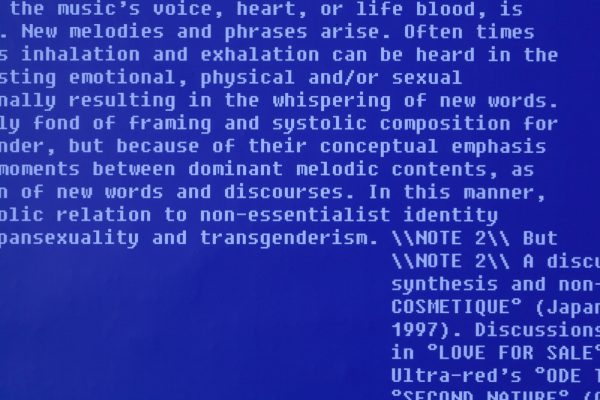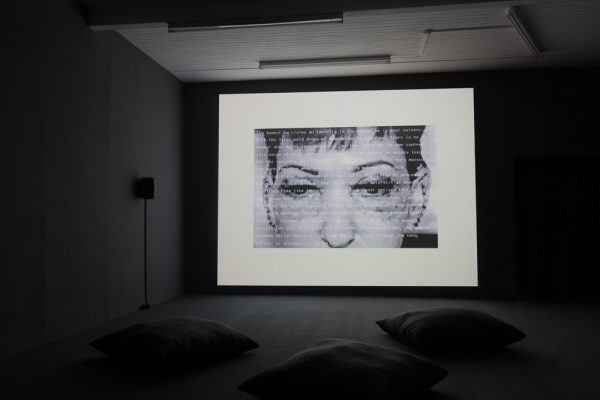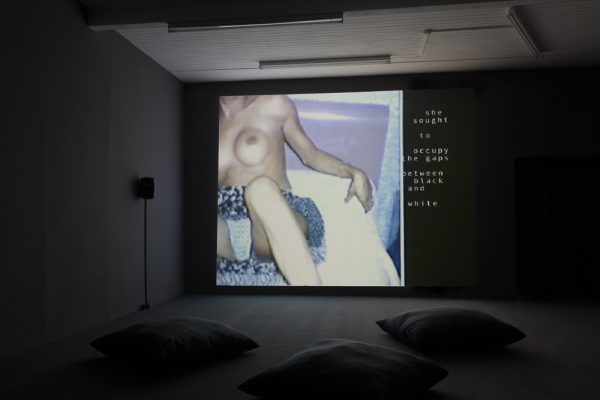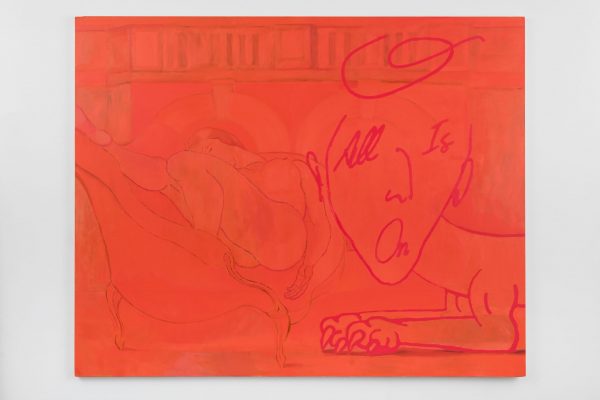In the first room of Terre Thaemlitz’s 2017 exhibition ‘INTERSTICES’, at Auto Italia in London, columns of white text ran across one wall. Thaemlitz used Terminal font dimly lit by blue light, evoking the white on blue screens of late 1990s coding software; the text moves from describing the curves of audio waves forms, to the melancholy Thaemlitz’s feels when he applies ‘the first drops of cold foundation to my face’. The sense that the binary codes of programming and gender were being scrambled was amplified in the second room, where, fragments of pornography and 1990s talk shows were accompanied by jarring instrumentals: versions of songs, including Nina Simone’s ‘Four Women’, with all the vocals missing. These are the interstices of the show’s title: fleeting moments of loss, only present in their absence. For Thaemlitz, interstices are more than formal processes – they are an analogue for her non-essentialist approach to gender and sexual identity. Being queer, trans, non-binary, or intersex is neither the foundation for a new form of identity, nor a refusal of identity that amounts to a transgressive political liberation. Like ‘the sound of stubble peaking through my concealer’, interstices are attempts at identity jamming, as Thaemlitz’s recent collection of writings, Nuisance: Writings on Identity Jamming and Digital Audio Production, is titled: impossible states, lived contradictions.
Thaemlitz is a multi-media producer, DJ, writer, educator, and founder of the record label Comatose Recordings. Over three decades and under numerous alias – DJ Sprinkles, G.R.R.L., K-S.H.E. – he has released nineteen albums and exhibited video, audio, and textual work in various contexts, most recently in a two-day residency at Café OTO in London. Albums like Soil (1994) interlace ambient noise with brutal accounts of domestic violence; others, like Midtown 120 Blues (2008), contain deep house anthems played and praised in mainstream clubs like Fabric or Panorama Bar. Thaemlitz is hostile to the way these clubs trade on a nostalgic vision of house music, the genre she most frequently works in, recasting it as a liberating paradise for queers and people of colour. As he recounts on the opening track to Midtown 120 Blues, ‘the contexts from which the deep house sound emerged are forgotten: sexual and gender crises, transgendered sex work, black-market hormones, drug and alcohol addiction…’
Still, she continues to work with that sound all the same, and hosts the club nights Deeperama and Deepalicious in Japan, where he has lived since 2001. Producing contradictions like these is typical of Thaemlitz’s work, in whatever medium it appears. But even viewing contradictions as productive betrays what is most challenging about that work: its refusal to be made a tool for affirmative notions of gender and sexual identity – or for sympathetic discussion and critical explication. In our discussions, which took place at Thaemlitz’s request through an exchange of emails in November 2017, attempts to resolve the contradictions of her life and work into a coherent story were met with a laughing refusal to submit to such a grand modernist gesture. Instead we came to scratch even deeper into the contradictory desires normally smoothed over in the interview as a form. As she later said, it’s ultimately in the tensions and twisting between two people – the interstices – where discussion and exchange occurs.








